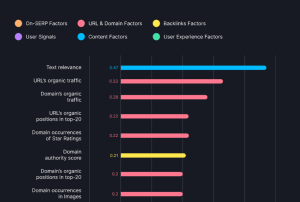Are you looking to make your WordPress website more mobile-friendly? If so, mastering mobile optimization WordPress should be your top priority. With Google ranking mobile-friendly sites higher in its search algorithm, it is more crucial than ever to ensure that your WordPress site is optimized for mobile devices. This not only improves user experience but also drives more traffic, engagement, and conversions. From understanding the basics, implementing best practices, optimizing WordPress themes and plugins for mobile, to measuring the success of your mobile optimization efforts, this article will guide you through the entire process.
In addition, you might also want to understand how to create content for your blog quickly and inexpensively in order to appear in the top 3 search engine results as soon as possible. Here’s an excellent guide on seo wordpress that you might find helpful. Let’s dive into the fascinating world of mobile optimization for WordPress SEO!
”Summary
Mastering mobile optimization for WordPress SEO is crucial in modern web management. This process enhances the efficiency and user-friendliness of WordPress sites on mobile devices. Google’s search algorithm favors mobile-friendly sites, often ranking them higher in search results. The key elements of mobile optimization include responsive design, loading speed, and navigability.
Important steps for optimizing a WordPress site for mobile devices involve choosing a responsive theme that adjusts to different screens, while also being cautious of plugins that might not be mobile-compatible. The site speed is another critical aspect, with advice for image compression and minimizing HTTP requests. Prioritizing the user experience, with easy navigation and comprehensible content on small screens, is also emphasized.
Theme and plugin optimization for mobile devices is essential, with recommendations for using responsive themes and testing theme compatibility with different mobile devices. Plugins such as WPtouch Mobile Plugin and Jetpack are suggested to enhance the mobile visitor experience. Regular monitoring and measurement of mobile optimization performance, using tools like Google Analytics, is also significant for maintaining and improving mobile SEO.
Understanding the Basics of Mobile Optimization for WordPress SEO
Mobile optimization for WordPress SEO is a critical aspect of modern website management. It refers to the process of making a WordPress site more efficient and user-friendly on mobile devices. This process is essential because a significant proportion of internet users access websites using smartphones and tablets.
Why is Mobile Optimization Important for WordPress SEO?
The importance of mobile optimization for WordPress SEO cannot be overstated. Google’s search algorithm prioritizes mobile-friendly sites, meaning sites optimized for mobile are likely to rank higher in search results. This is particularly true since Google switched to a mobile-first indexing approach, where it primarily uses the mobile version of a website for indexing and ranking. A well-optimized mobile site can lead to increased traffic, higher user engagement, and ultimately, more conversions.
Key Elements of Mobile Optimization for WordPress SEO
The fundamental components of mobile optimization for WordPress SEO include responsive design, page load speed, and navigability. A responsive design ensures that the website layout adjusts optimally to the screen size of the device being used. Page load speed is also crucial; mobile users expect pages to load quickly, and slow load times can lead to high bounce rates. Navigability involves making it easy for users to find and interact with key elements of your site, such as menus, buttons, and links. Implementing these elements correctly contributes to an improved user experience, which is a critical factor in SEO rankings.
For example, a WordPress site selling handmade crafts should have a responsive design ensuring all product images and descriptions display correctly on all devices. The site should also load quickly, even on 3G or 4G networks, and users should be able to easily add items to their cart and navigate to the checkout page.
Best Practices for Implementing Mobile Optimization on WordPress
“Choosing a Mobile-Responsive Theme
One of the first steps in mobile optimization for WordPress is selecting a mobile-responsive theme. These themes automatically adapt the layout to fit different screen sizes, making your site easy to navigate on smartphones and tablets. WordPress offers a variety of responsive themes that you can choose from, both free and premium. The key is to test these themes on various devices before settling on one to ensure it delivers the desired user experience.
Using Mobile-Friendly Plugins
Just as themes can impact mobile optimization, so too can plugins. WordPress plugins are often a double-edged sword. While they add to the functionality and even aesthetics of your site, some may not be mobile-friendly. For instance, a plugin that adds a beautiful image slider on the desktop version of your site might not translate well to a smaller mobile screen. It’s important to choose plugins that are designed with mobile optimization in mind. If possible, select plugins that offer mobile-specific settings.
Optimizing Website Speed
Website speed significantly impacts mobile optimization. Mobile users are typically on-the-go and expect websites to load quickly. A few ways to enhance the speed of your site include compressing images, leveraging browser caching, and minimizing HTTP requests. Tools like Google PageSpeed Insights can help you identify areas of your site that need improvement in terms of speed.
Emphasizing User Experience
Finally, successful mobile optimization WordPress strategies always prioritize user experience. This includes easy navigation, readable text, and tappable buttons. It also means that content should be easy to find and digest on a small screen. A mobile user’s journey through your site should be just as satisfying and effective as a desktop user’s journey. Remember, a positive mobile user experience can lead to higher engagement and conversion rates.
”Optimizing WordPress Themes and Plugins for Mobile
Mobile optimization is a crucial aspect of WordPress SEO. In particular, the optimization of WordPress themes and plugins for mobile devices can significantly enhance your site’s performance and user experience on mobile platforms. This section will discuss the optimization process for WordPress themes and plugins.
Optimizing WordPress Themes for Mobile
WordPress themes play a critical role in mobile optimization. The choice of theme can significantly affect how your site appears and performs on mobile devices. Always opt for responsive themes, as these automatically adjust to different screen sizes. For instance, the Twenty Twenty theme is a notable example of a responsive WordPress theme. Furthermore, ensure to test your chosen theme with various mobile devices to confirm its mobile compatibility. Tools like Google’s Mobile-Friendly Test can be invaluable for this purpose.
Optimizing WordPress Plugins for Mobile
Like themes, plugins can also influence your WordPress site’s mobile optimization. Certain plugins can help improve your site’s mobile SEO. For example, the WPtouch Mobile Plugin creates a simple, elegant mobile theme for visitors accessing your site via their smartphones. Meanwhile, the Jetpack plugin offers a mobile theme option designed for speed and simplicity. Additionally, always ensure to keep your plugins updated. Developers often release updates that address bugs, add new features, and improve overall performance, including mobile optimization WordPress.
In conclusion, optimizing WordPress themes and plugins for mobile is a vital step in mobile optimization for WordPress SEO. The choice and management of themes and plugins can significantly impact your site’s mobile performance and SEO, so it’s essential to choose wisely and keep them updated.
Measuring and Monitoring the Success of Mobile Optimization for WordPress SEO
Once you’ve implemented mobile optimization for your WordPress site, it’s essential to measure and monitor the success of your efforts. This involves evaluating key metrics and using analytics tools to gain insights into your site’s performance on mobile devices. Let’s delve into how you can effectively track your mobile optimization success.
Key Metrics to Monitor for Mobile SEO
The first step in measuring the success of mobile optimization WordPress is identifying which metrics to monitor. Several key indicators can provide a sense of how well your website is performing in terms of mobile SEO. One of these is the mobile bounce rate, which shows the percentage of visitors who leave your site after viewing only one page. A high bounce rate could indicate that your site’s mobile experience is not up to par. Another important metric is the mobile conversion rate, which measures the percentage of mobile visitors who complete a desired action on your site, such as filling out a form or making a purchase. Lastly, page load time is a critical factor, as mobile users expect speedy, seamless experiences.
Using Analytics Tools for Tracking
There are many analytics tools available that can help you track these metrics and monitor the success of your mobile optimization efforts. Google Analytics is a widely used tool that provides comprehensive insights into your site’s mobile performance. It can show you information such as the number of mobile visitors, their behavior on your site, and how they interact with your content. Additionally, Google’s Mobile-Friendly Test can help you see if your site meets Google’s standards for mobile optimization. Regularly checking these tools and making necessary adjustments based on the insights you gain is critical to maintaining and improving your mobile SEO.
Conclusion
Mobile optimization for WordPress isn’t just an option, it’s a necessity. It’s all about enhancing the user experience for mobile visitors, which in turn drives more traffic, engagement, and conversions. This involves selecting responsive themes, using mobile-friendly plugins, and ensuring your site load speed is optimal. Besides, it’s crucial to monitor your site’s performance to gauge the effectiveness of your mobile optimization efforts. Tools like Google Analytics can offer valuable insights. Remember, mobile optimization WordPress isn’t a one-time job but an ongoing process that requires regular monitoring and adjustments. So, ensure your WordPress site is mobile-optimized to enjoy higher visibility in Google’s search results and, ultimately, more leads and conversions.
.
